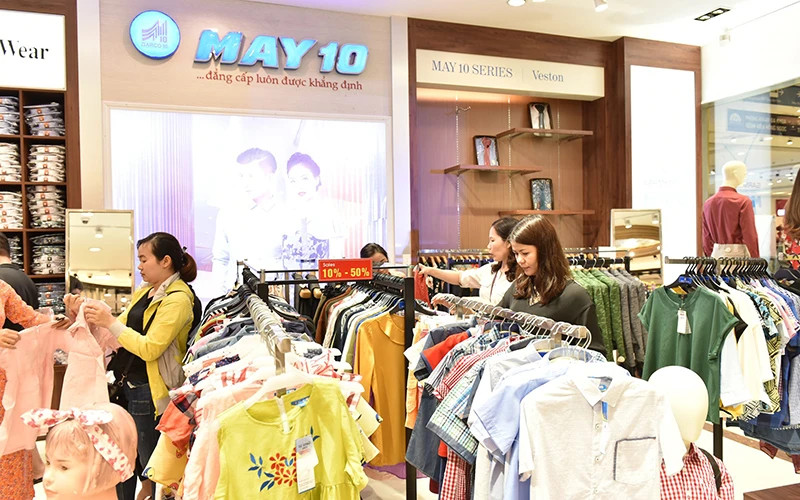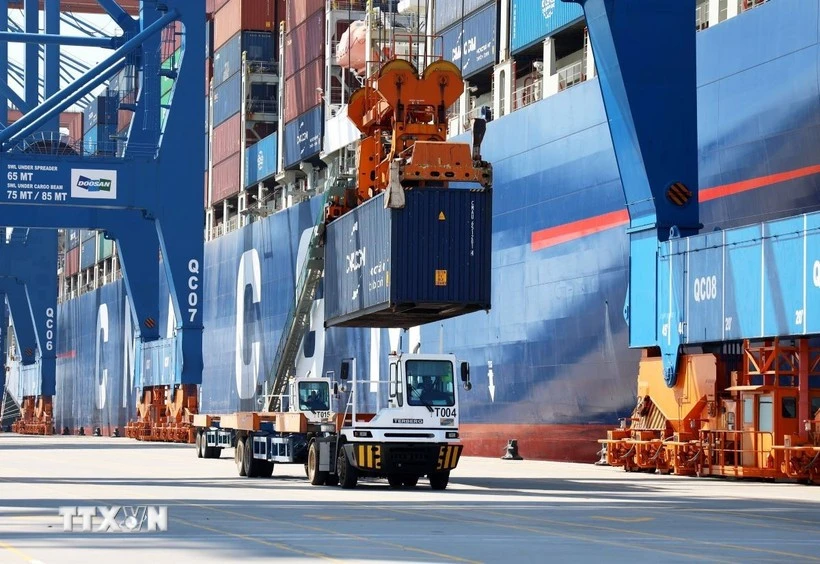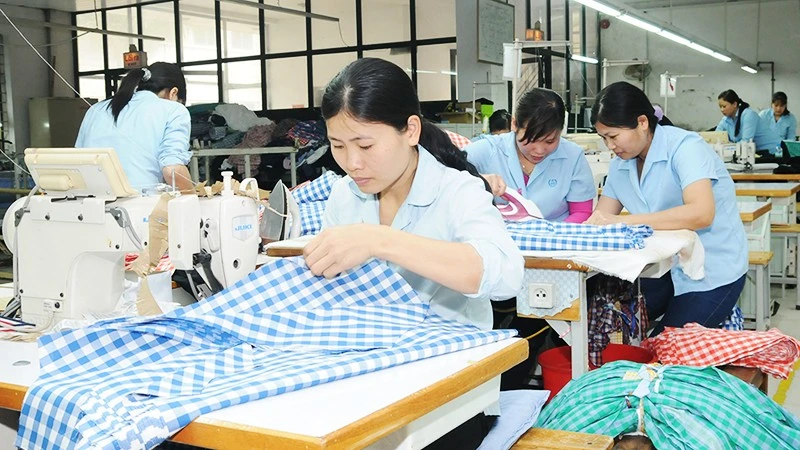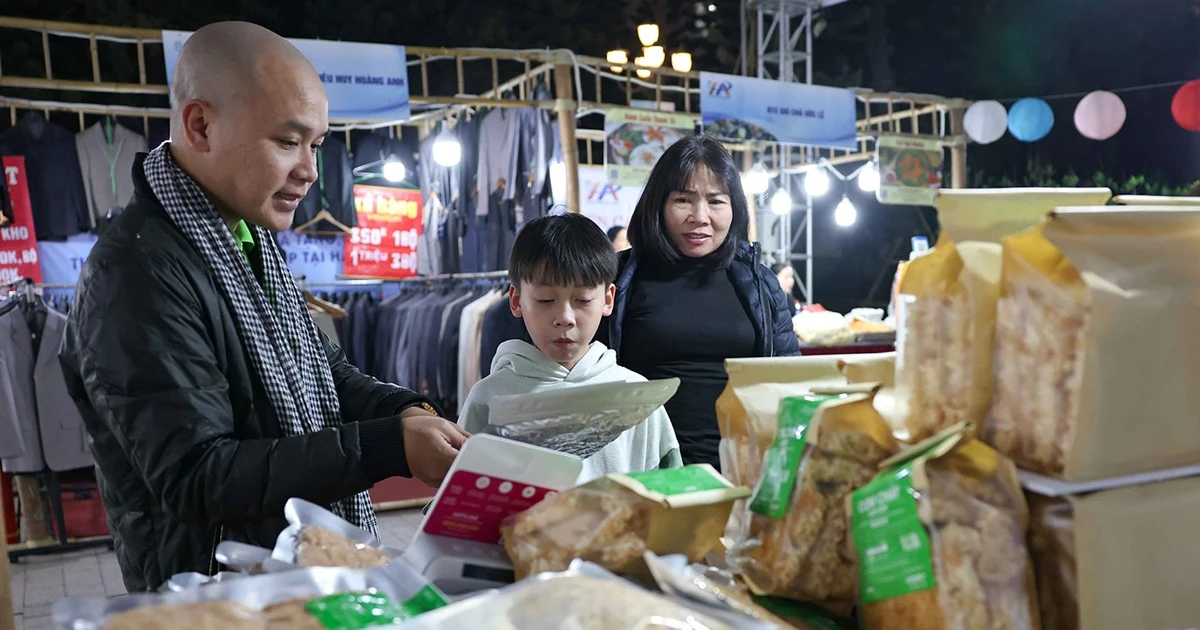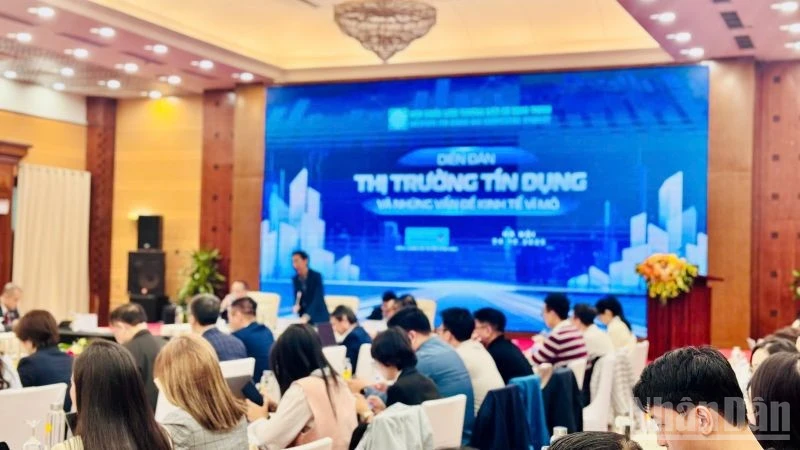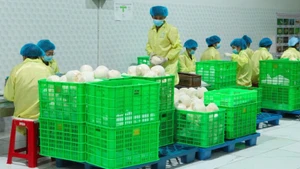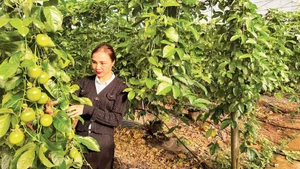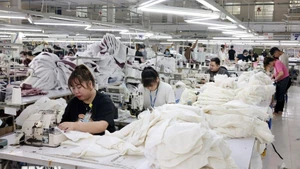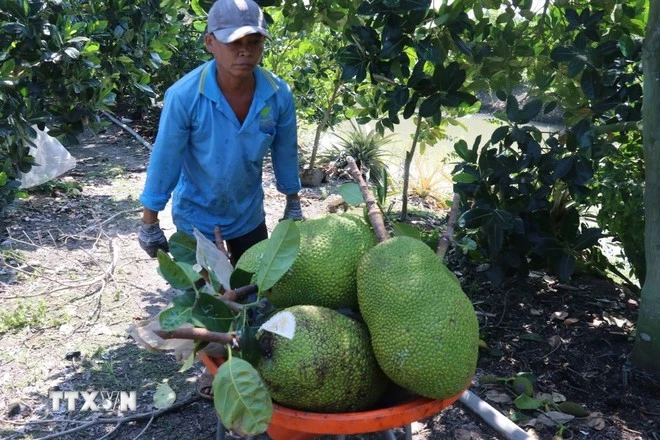With a population of more than 100 million, the domestic market is considered a "fertile cake" for enterprises to increase profits as well as build and develop product brands; thereby enhancing competitiveness and affirming their global position.
Exporting brands
Over the past 30 years, Garment 10 Corporation has provided the market with a series of multi-style fashion products, featuring a rich variety with many materials and designs following the trends of Vietnamese and international fashion, such as Eternity GrusZ, May 10 Series, May 10 Expert, and May 10 Eco.
Specifically, two product lines — Generos, for young people and modern customer segments, and De Theia, a high-end product line for women — are "storming" the market and chosen by many consumers.
General Director of Garment 10 Corporation Than Duc Viet said that in recent years, the unit has continuously invested in developing models and launched a series of separate collections to meet all customer needs. Developing the domestic market not only helps increase revenue and ensure stable jobs for workers but also gradually moves towards the goal of exporting Garment 10's own brand.
“The year 2024 marks the success when De Theia products are exported to the US, Canada, Europe, the Middle East, and Australia, under its own brand. This is a source of pride and great motivation, creating a foundation for businesses to continue exporting their own brands in the coming time,” said Than Duc Viet.
To develop the brand and promote domestic sales, businesses must be proactive in all stages from start to finish, such as from design ideas, sample development, proactive raw material sources, to distribution networks, multi-channel sales to meet consumer demand. Businesses must have synchronous, systematic investment and a long-term development strategy.
In addition to famous domestic fashion brands such as Paul Downer, DGC, Forever Young, in recent years, Duc Giang Corporation has continuously invested in and developed high-end product lines such as S.Pearl and HeraDG to meet customer needs.
General Director of Duc Giang Corporation Pham Tien Lam said that in the face of the constantly changing trend of world fashion, the unit is gradually transforming towards sustainable fashion and green production with practical activities, demonstrating responsibility to the community and the environment.
The transformation not only meets the requirements of fashion criteria, regeneration and emission reduction from partners and customers, but also helps the unit develop the market, towards exporting its own brand as well as increasing value and enhancing its position in the global value chain.
Expanding the chain of links
In order to keep up with the globalisation trend, textile and garment enterprises are constantly striving to be creative in their technology innovation strategies, researching and applying science and technology to production, orienting the production shift from the cut, make, trim (CMT) processing method to the original design manufacturer (ODM) and original brand manufacturer (OBM) production methods to increase value and move to higher segments in the global textile and garment chain.
In particular, the supply of raw materials is gradually being built in the direction of chain links to increase the localisation rate, encourage the use of each other's products and services, thereby affirming their position and competitiveness with foreign brands in the domestic market.
Statistics of the Vietnam Textile and Garment Group (Vinatex) show that from 2020 to 2024, the group and its member units have focused on developing and expanding their domestic business network with total revenue of about 40 trillion VND, accounting for 20% of the total revenue of the whole group.
In addition to businesses that have built their own brands and customer bases such as Garment 10, Viet Tien, Nha Be, Duc Giang, and Phong Phu, Vinatex has also opened more fashion centres to meet consumer demand.
"With the goal of developing modern, civilised domestic trade, growing rapidly and sustainably, thereby creating a solid foundation to promote exports and participate more deeply in the global textile and garment supply chain," said Vuong Duc Anh, Director of Vinatex Product Development and Business Centre.
Vinatex General Director Cao Huu Hieu said that in recent times, the group and its member units have continuously invested in and promoted the production of product lines to meet market demand. Many businesses have built product and service brands with increasingly high quality and reasonable prices, attracting the attention of many people.
However, the domestic fashion market is facing increasingly fierce competition as major fashion brands in the world are "invading" Vietnam.
Therefore, businesses need to build and develop their own markets, delve into niche markets and maximise their competitive advantages.
Truong Van Cam, Vice Chairman cum Secretary General of the Vietnam Textile and Apparel Association (VITAS), said that with a population of more than 100 million people and increasing income, if people only spend about 15% of their income on consumption, the domestic market capacity will reach about 7 billion USD per year. This number provides great potential for businesses to exploit, while at the same time promoting the development of brands and product labels to aim for the goal of exporting 30 Vietnamese brands in the coming time.
